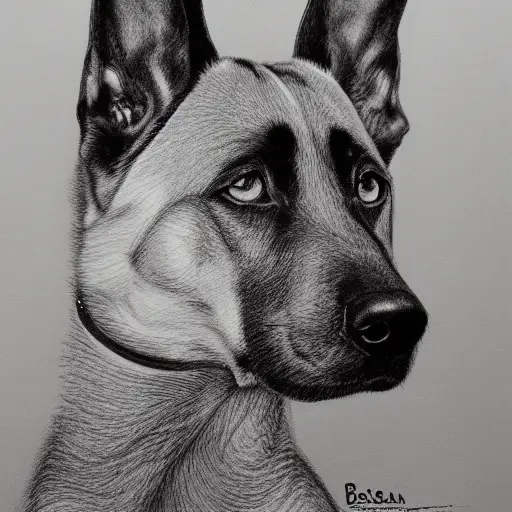If you’re considering getting a Belgain Malinois as a pet, it’s important to understand the most common health problems this breed is prone to. These include Gastric dilatation and volvulus, Hypothyroidism, and Retinal dysplasia. If you think your pet may be suffering from any of these conditions, you should schedule a consultation with a veterinarian. Your vet will be able to give you information on how to help your pet, including lifestyle changes and supplements. He can also recommend surgery, stem cell treatments, and physical therapy.
Hip dysplasia
Hip dysplasia affects both the hips and the legs. Dogs with this problem may experience difficulty getting up out of bed, running, jumping, and climbing stairs. Some dogs also exhibit signs of aggression or fear. If you think your dog may be suffering from this condition, make an appointment with your veterinarian. Your veterinarian can provide you with pain medication, recommend supplements, and offer advice on lifestyle changes. Your veterinarian can also recommend physical therapy or surgery.
Hip dysplasia is most common in large breeds and is caused by an abnormal development of the hip joint. The hip socket and joint will not align properly, which can lead to intense pain and difficulty performing normal activities. In severe cases, your dog may not even be able to place any weight on its hind legs.
If you suspect your dog has hip dysplasia, the first thing your veterinarian should do is to perform an exam. The primary goal of a hip exam is to determine the amount of laxity in the hip joint and the degree of degenerative joint disease. Radiographs and palpation are very helpful for this diagnosis. In some cases, your dog may not need surgery, and conservative treatment may be enough to ease the pain.
Hip dysplasia is an inherited condition. Both genetics and environmental factors contribute to the development of the hip joint. When hip joint laxity occurs, it allows abnormal wear and tear on the joint and leads to osteoarthritis and bone spurs. Surgical procedures are available for the treatment of hip dysplasia, including total hip replacement.
Belgian Malinois are very intelligent and active, but they can also suffer from hip dysplasia. Although hip dysplasia is common in this breed, treatment is possible. As with any breed, proper care and exercise are essential to a healthy Belgian Malinois. The breed also needs lots of physical and mental stimulation. Sedentary behavior will lead to behavioral problems and physical impairments.
Genetic progress can be tracked over time by assessing hip and elbow conformation. The Orthopedic Foundation for Animals’ hip and elbow ratings database contains over 1000 records dating back to 1970.
Gastric dilatation and volvulus
These conditions cause your dog to bloat and become uncomfortable, but are usually preventable. A vet can perform surgery to secure your dog’s stomach and prevent the problem from reoccurring. These procedures are expensive, but can save your dog’s life if treated early.
These health problems can lead to joint pain and metabolic disorders. They can also cause heart problems. To prevent these problems, avoid feeding your dog leftovers or treats. Instead, offer them your attention and affection. A doggie treat will make them feel better.
Surgical treatment for GDV aims to correct the twisted stomach and restore the stomach to its proper position. In addition, it aims to remove dead stomach tissues and prevent recurrence of the condition. Depending on the severity of the condition, your veterinarian may use several surgical techniques. One of them is gastropexy, which involves sewing the stomach wall to the abdominal wall. Another technique is pyloroplasty, which involves opening up the pylorus to facilitate the flow of digestive fluids. Your veterinarian will choose the one that is most appropriate for your pet. In some cases, the twisted stomach may also require removal of the spleen.
Hypothyroidism
Hypothyroidism is a treatable condition, but it is not a cure. If your dog’s thyroid levels are too low, you may have to give them a synthetic hormone called levothyroxine to make them feel better. You will also need to monitor their weight and coat to determine whether they are responding to medication. Your veterinarian can prescribe an appropriate dosage and educate pet parents on proper medication administration.
The Belgian Malinois has a tendency to suffer from hypothyroidism, which is a condition that results in a reduced level of thyroid hormone in the body. Regular blood tests will help detect hypothyroidism before it has a chance to cause any serious health issues. A healthy diet and exercise will also minimize the negative effects of this condition.
The disease is usually diagnosed in dogs between the ages of four and 10 years. It is often caused by an autoimmune disorder that causes the thyroid tissue to shrink and become inflamed. Dogs of medium to large breeds are more likely to develop hypothyroidism than miniature and toy breeds. This condition is also more common in dogs with thyroid cancer. Fortunately, it can be treated and your dog’s life can improve dramatically.
Hypothyroidism can cause hair loss, thin skin, and black patches on the skin. Your dog may also become overweight, have a slow heart rate, or develop toenail infections. Eventually, the disease may affect your dog’s ability to have puppies and can lead to heart and blood vessel problems. Your dog may even experience infertility.
The thyroid gland is an important gland in the body, and it must be treated correctly to ensure optimal health. Hypothyroidism can also result in other health problems, so it is important to have your dog diagnosed by a veterinarian. If your dog is suffering from hyperthyroidism, contact your veterinarian as soon as possible.
Another common health issue in Belgian Malinois is a disease called Progressive Retinal Atrophy. This is an inherited disease. Dogs with PRA have dilated pupils, which will gradually cause blindness. Although the disease is not painful, it is incurable. It may occur in dogs without obvious symptoms. The dog may appear restless or pray. If the condition has occurred, your veterinarian may suggest lifestyle changes or medication.
Retinal dysplasia
One of the most common health issues in the Belgain Malinois is retinal dysplasia, which affects the eyes. The condition results in the clouding of the lens, which gradually impairs vision. This condition is largely hereditary. While some dogs can recover from this condition without any surgery, others will require surgery.
Retinal dysplasia occurs when the photoreceptor cells in the retina develop abnormally. In the early stages, the condition affects only the rod cells, which are responsible for night vision. Later, the condition affects the retina in general, causing the dog to lose vision and become blind.
The condition is also common in labrador retrievers. In some cases, it causes an enlarged retina. If your pet is suffering from retinal dysplasia, you should take them to a veterinarian as soon as possible. Your veterinarian can provide pain medications, prescribe supplements, and give advice on how to care for your dog. In some cases, the veterinarian may also recommend surgery or stem cell treatments.
Retinal dysplasia is inherited. Most dogs with this eye disease have one eye or both eyes affected. It is usually a recessive trait, but in some cases, it can also be caused by trauma to the eye. Exposure to certain toxins or UV rays may also cause retinal dysplasia.
Retinal dysplasia in Belgian Malinois is a serious problem that can lead to blindness. There are 29 known genetic mutations linked to retinal dysplasia. More mutations are expected to be discovered in the future.
Retinal dysplasia is characterized by a progressive degeneration of the retina. Symptoms of this disease include tortuosity of the retinal vessels, geographic lesions, and detachment of the retina. Retinal dysplasia affects vision and requires proper treatment.













